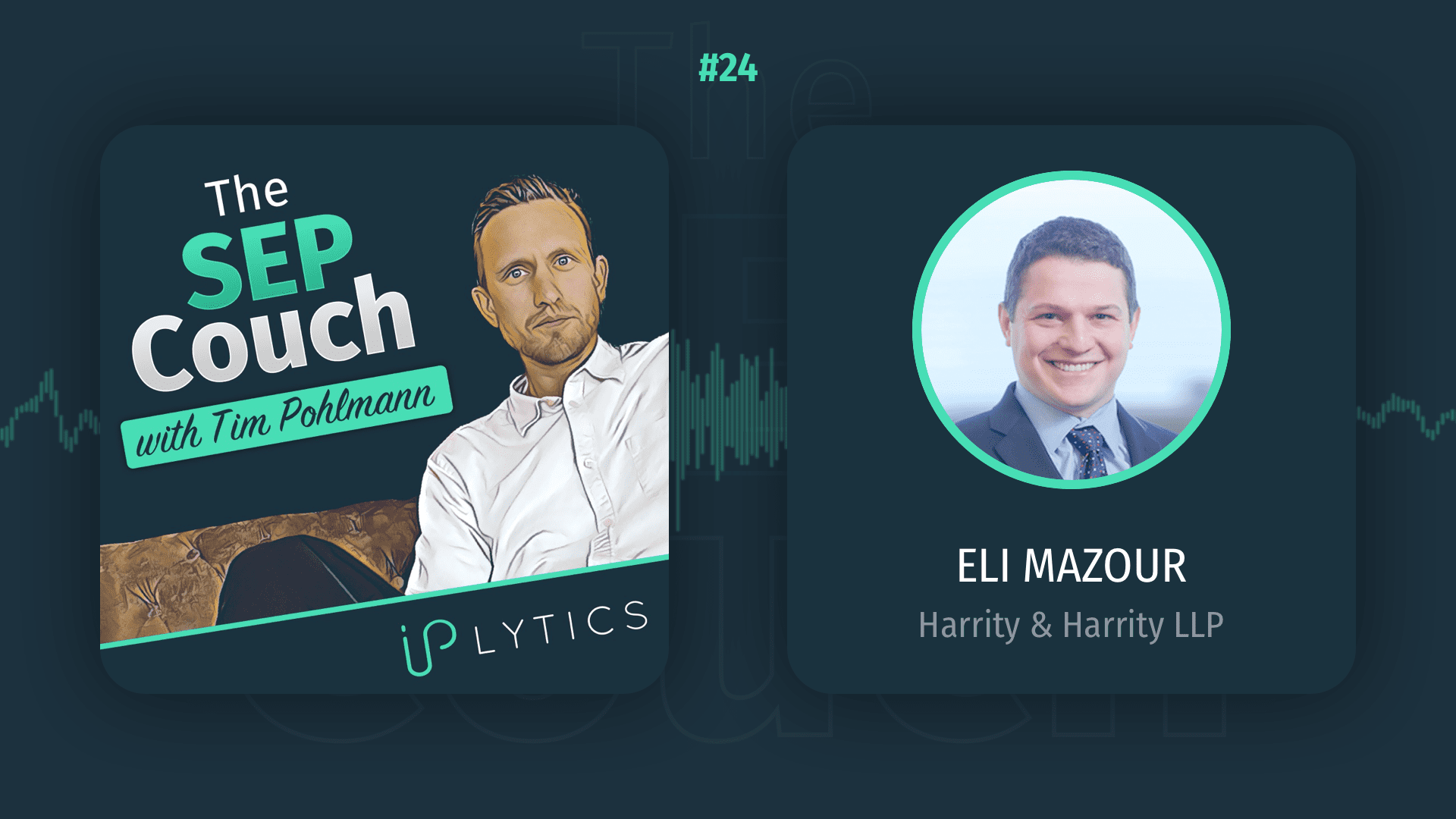The Art of SEP Claim Drafting – Episode 24

Watch on YouTube
Guest:
- Eli Mazour, Partner, Harrity & Harrity LLP
Eli Mazour is a Partner with Harrity & Harrity LLP where he leads the firm’s patent prosecution team. Eli’s practice focuses on helping large technology companies build valuable, high-quality SEP portfolios in an efficient manner. In this role, he develops and implements best practices for managing workflow and innovative, data-driven patent prosecution strategies for reaching favorable results at the USPTO. Eli also helps clients evaluate existing patent portfolios, identify strategic areas for patenting, and create processes for harvesting disclosures of patentable inventions. In addition, he has been involved with licensing negotiations, patent infringement investigations, clearance of products (freedom to operate opinions), and patent litigation. As a result, he is keenly aware of the pitfalls to avoid and opportunities to grasp during patent prosecution. Eli is also the creator and host of the Clause 8 podcast, which features interviews with the most interesting members of the IP community.
Eli has a strong track record for drafting SEPs for clients that have high-quality SEP portfolios such as Qualcomm. In the SEP Couch podcast, Eli elaborates on why SEPs are so special and different from other patents. He explains that drafting SEP claims is much more complex since the language used in an invention disclosure may be different compared to the language used in a standards document. And a standard still develops and changes which makes it even more difficult to keep mapping claims to evolving standards section. Eli works closely with the inventors while also monitoring standards development. He also interviews the USPTO examiners to better understand what scope of a claim will likely be accepted.
SEPs must not only be essential but also valid. An additional feature described in a claim creates the risk that prior art exists somewhere. Therefore, if a feature does not make it in a standard, he rather focuses on claim language to use more specific language.
The USPTO allows third parties to submit prior art in a so-called inter partes review (IPR) presented before the Patent Trial and Appeal Board (PTAB). This possibility has created new business models such as the company Unified Patents which helps its clients to “kill” SEPs in targeted invalidation campaigns. Such practices have increased the requirements for drafting valid patents, even though Eli explains that especially large SEP holders such as Qualcomm have such a high-quality patent portfolio that it does not matter if a few patents are found invalid. There is a proposal for patent reform in the US patent system (USPTO’s new Catch-22) that could make it much more difficult to file IPRs, but Eli does not believe it will pass.
Finally, Eli comments on the EU Commission’s draft of a proposed SEP regulation which includes a register of essential SEPs. Eli argues that he cannot see how third parties should be able to efficiently determine essentiality which is a very complex task that may take days or even weeks to just claim chart one patent.
